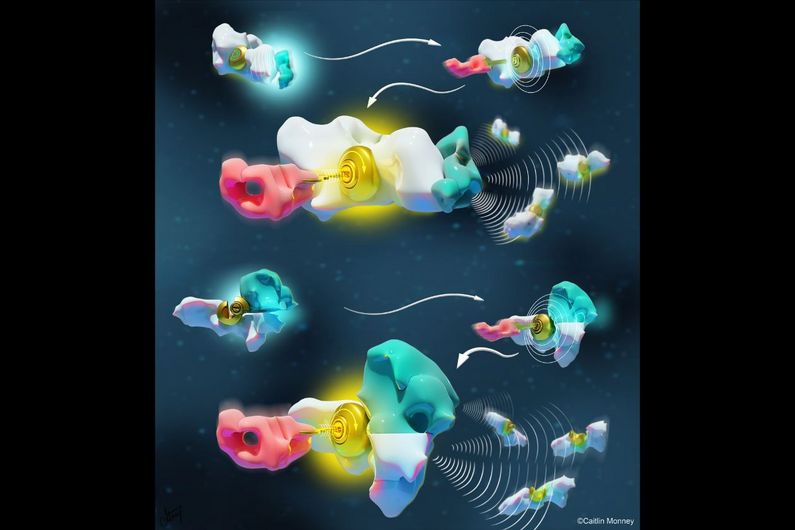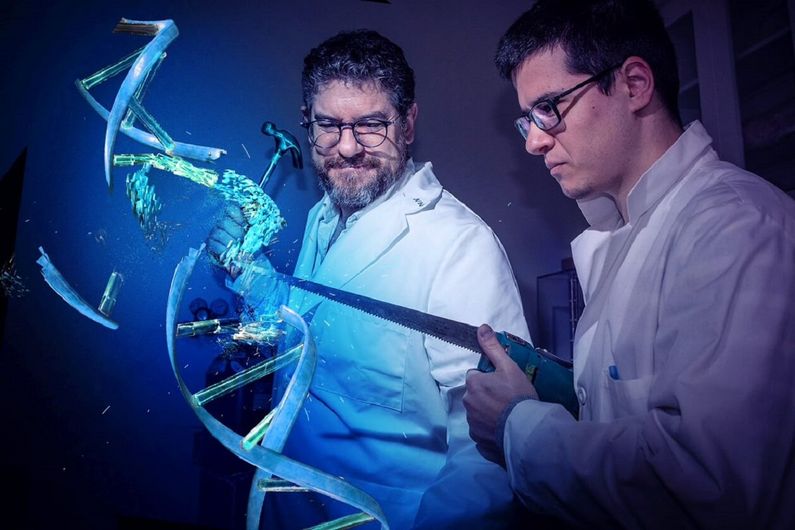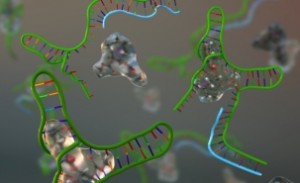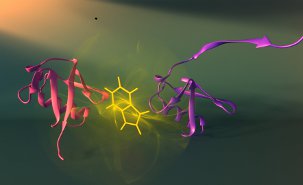I last mentioned the Grand Challenges Canada organization in last year’s Dec. 22, 2011 posting. It’s a non-governmental organization funded by the Canadian federal government. I did express some confusion regarding the governmental/non-governmental aspects in last year’s posting,
So if I understand this rightly, the Canadian federal government created a new fund and then created a new NGO to administer that fund. I wonder how much money is required administratively for this NGO which exists solely to distribute DIF [Development Innovation Fund]. I’m glad to see that someone is getting some money for research out of this but it does seem labyrinthine at best.
Leaving that discussion aside, let’s focus on this year’s grantees and their projects (from the Nov. 22, 2012 news release about the Canadian grantees),
CANADA’S STARS IN GLOBAL HEALTH SHINE
FROM SEA TO SEA & WIN FUNDING FROM
GRAND CHALLENGES CANADA
From cities all across the country, 17 Canadians are selected for their bold out-of-the-box ideas to tackle debilitating disease and save lives in the Developing World
Toronto. Grand Challenges Canada, which is funded by the Government of Canada, announced today seed grants awarded to 17 innovators for their bold and creative ideas to tackle health conditions in poor countries. The Stars in Global Health program seeks unique, breakthrough and affordable ideas which can be transformative in addressing disease – innovations that can benefit the developed world as well. The 17 were selected from a total of 60 proposals submitted for the Canadian Stars program. A total of more than $1.7 million in funding will go to innovators from across Canada.
The bold ideas are breakthrough innovations such as mimicking rocket propelled technology, but in the body, to address maternal bleeding. A meter to detect HIV infection in fewer than 5 minutes. And a virtual reality game to assist stroke victims.
“Canada has a deep pool of talent dedicated to pursuing bold ideas that can have big impact in the developing world,” said Dr. Peter A. Singer, CEO of Grand Challenges Canada. “Grand Challenges Canada is proud to support these extraordinary innovators from across the country because they will make a difference to so many lives.”
“Canada works with our like-minded partners throughout the world to leverage our investments in health innovation so they’re focused on getting results,” said Foreign Affairs Minister John Baird. “We support Grand Challenges Canada’s Stars in Global Health so these innovators can apply their talents and further efforts to make the world a healthier and safer place.”
Each of the 17 innovators will receive a grant of $100,000 to develop their bold ideas, which include:
- Vancouver: Dr. Christian Kastrup will mimic rocket technology to propel coagulant nanoparticles into the bloodstream and stop maternal bleeding, a major cause of death in the developing world. (for video: http://bit.ly/RWdW9w)
- Vancouver: Dr. Robin Evans is developing a Burn Survival Kit, a high-tech solution to treat burn victims. The innovation is being tested in Uganda where often burns are untreated or mistreated. This unique kit will include a low-cost silver nanotubule dressing so that the treatment is affordable. (for video: http://bit.ly/T2rPFK)
- Edmonton: Dr. Julianne Gibbs-Davis is creating a unique approach to diagnosing TB. It involves extracting DNA from the infected persons TB bacteria and does not require the usual temperature recycling that is expensive and difficult to implement in low resource settings. (for video: http://bit.ly/SKNLSf)
- Hamilton: Dr. Leyla Soleymani is also tackling TB diagnosis with a hand-held, solar rechargeable, inexpensive diagnostic for rapid assessment of patients at the bedside.
(for video: http://bit.ly/T02HhS)
- Toronto: Dr. Cheng Lu has a unique idea for tackling clinic and hospital infections. A coating can be sprayed or wiped on surfaces; once applied, the long-lasting anti-bacterial components are activated by sunlight or artificial light. Easy to use and effective. (for video: http://bit.ly/TDxU6L)
- Kingston: Dr. Karen Yeates will employ cell phones to improve cervical cancer screening and detection. It is being tested in remote areas of Tanzania.
(for video: http://bit.ly/RSvWTK)
- Ottawa: Dr. Marion Roche will use social marketing to rejuvenate interest in taking zinc to control childhood diarrhea. (for video: http://bit.ly/QF7S8t)
- Montreal: Dr. Philippe Archambault will use virtual reality to assist rehabilitation of stroke victims suffering from hand or arm immobilization. (for video: http://bit.ly/T2rX7X)
- Montreal: Dr. Hanna Kienzler’s project is called “Defeating the Giant with a Slingshot” and is a novel approach to treating trauma in the developing world. The innovation results in blocking trauma memory and will be tested with torture victims in Nepal.
(for video: http://bit.ly/QF7TJx)
- Montreal: Dr. Alexis Vallée-Bélisle is developing a meter to detect HIV infection in fewer than 5 minutes. This diagnostic will lead to earlier treatment of the disease.
(for video: http://bit.ly/XD4oFw)
- Halifax: Dr. Patricia Livingston’s project will improve emergency services with a specific focus on crisis management for mothers delivering babies. The project is being tested in Rwanda. (for video: http://bit.ly/TCTACv)
“It is inspiring to see the wealth of Canadian talent working to improve the health of people in developing countries,” said Joseph L. Rotman, Chair of Grand Challenges Canada. “Our Stars in Global Health program is an excellent opportunity for these dedicated Canadian innovators, with support from the Government of Canada, to bring their bold ideas forward and improve global health conditions.”
In addition to these 17 Canadian innovators, Grand Challenges Canada announced today 51 grants totalling just over $7 million for Canadians and developing world innovators. Like the Canadian Stars, these innovators’ bold ideas aim to tackle global health challenges* (http://www.grandchallenges.ca/wp-content/uploads/stars-LMIC-newsrelease-2012nov22-en.pdf)
In total, 68 Canadian and developing world innovators were selected from 310 submitted proposals.
Upon completion of this grant, if their ideas are effective and proven, the innovators will be eligible for an additional Grand Challenges Canada scale-up funding of up to $1 million.
Grand Challenges Canada is funded by the Government of Canada through the Development
Innovation Fund announced in the 2008 Federal Budget.
For information on the grants and to see each Canadian Star’s short video explaining the project, visit http://www.grandchallenges.ca/stars-r3-grantee-announcement-en/.
Please visit grandchallenges.ca and look for us on Facebook, Twitter, YouTube and LinkedIn.
About Grand Challenges Canada
Grand Challenges Canada is dedicated to supporting bold ideas with big impact in global health. We are funded by the Government of Canada through the Development Innovation Fund announced in the 2008 Federal Budget. We fund innovators in low and middle income countries and Canada. Grand Challenges Canada works with the International Development Research Centre (IDRC), the Canadian Institutes of Health Research (CIHR) and other global health foundations and organizations to find sustainable long-term solutions through integrated innovation – bold ideas which integrate science, technology, social and business innovation. Grand Challenges Canada is hosted at the Sandra Rotman Centre.
www.grandchallenges.ca
About Canada’s International Development Research Centre
The International Development Research Centre (IDRC) supports research in developing countries to promote growth and development. IDRC also encourages sharing this knowledge with policymakers, other researchers and communities around the world. The result is innovative, lasting local solutions that aim to bring choice and change to those who need it most.
As the Government of Canada’s lead on the Development Innovation Fund, IDRC draws on decades of experience managing publicly funded research projects to administer the Development Innovation Fund. IDRC also ensures that developing country researchers and concerns are front and centre in this exciting new initiative.
www.idrc.ca
There’s also a Nov. 22, 2012 news release about the newly funded projects which are being led internationally. Here’s a few I find particularly interestin,
A new trading system in Kenya: seeds and fertilizers for proof of child vaccinations
(for video: http://bit.ly/UFlMmN)
To eliminate persistent pocket areas of Kenya where children are not vaccinated or undervaccinated, researchers will create a barcoded vaccination card redeemable for farm seeds and fertilizer.
Updated each time a child gets a vaccine, the card is taken to one of about 20,000 local agro-vet outlets, where the barcode is scanned using an app on a camera-equipped smartphone. The farmer would then redeem an “agri-credit” for essential farm inputs.
Lead researcher Benson Wamalwa of the University of Nairobi says the program “would powerfully incentivize parents to seek and adhere to their children’s immunization schedule even when hard pressed financially to reach a distant vaccination centre.
The idea is a practical solution that would significantly boost small farm productivity and incomes for poor household while safeguarding the general health of children in farming villages through up-to-date immunizations.”
Creating wealth from human waste in cholera-troubled Haiti
(for video: http://bit.ly/RBbN38)
The recent cholera outbreak in Haiti heightened both awareness of the problem’s cause and demand for better sanitation services — a tough challenge in environments without reliable running water. Meanwhile, national demand for farm and forest compost is high.
Hoping to capitalize on those twin realities, a Haitian group will build in urban slums the first new $200, waterless “EcoSan” toilets that produce revenue-generating compost, with hopes of inspiring entrepreneurs to replicate the project throughout Haiti and around the world, where 2.5 billion people lack sanitation access.
The project will document the number of toilets built and people receiving sanitation services, quantity of compost produced, sales and the outcomes of tests for pathogens and nutrients.
A $100 kitchen reno to reduce indoor pollution and problem pregnancies in Bangladesh
(for video: http://bit.ly/THAPNQ)
The International Energy Agency estimates that biomass fuels such as wood and dung will continue providing 30% of global energy in resource-poor settings though 2050.
Exposure to smoke from biomass cooking fuels, however, is known to cause placental dysfunction and is highly associated with low birth-weight babies in developing countries. Part of the solution could be a locally-made, simple prefabricated “$100 kitchen” featuring a clean-combustion stove.
Researchers in Bangladesh will conduct a randomized controlled trial with 430 willing mothers, 2 to 3 months pregnant, half of whom will use the innovative, well-ventilated $100 kitchen with reinforced cement infrastructure, a waste disposal system, and a stove that combusts biofuels with minimal smoke.
Mobile app to reduce obesity in northern Nigeria
(for video: http://bit.ly/THB7nV)
WHO projects that globally by 2015 about 2.3 billion adults will be overweight; more than 700 million will be obese — an epidemic growing fastest in developing countries and leading to diseases like type 2 diabetes, cancers, cardiovascular disease, hypertension and stroke.
In rural northern Nigeria, where mobile phone use is now common (use in Nigeria rose almost 1,300% in 2010-11), health researchers led by Sally Akarolo-Anthony will work with a high-tech firm to create a smartphone app to provide a virtual mentor and online buddy system.
The app will compute a user’s metabolic rate and caloric requirement, prompt daily exercise, collect data on activity and eating, offer healthy diet tips (e.g. white vs. brown rice), estimate the daily calorie intake required to meet a weight-loss goal, and monitor change over time.
I wish all of the researchers success with their projects, which would mean success for Grand Challenges Canada and this particular model for funding.



